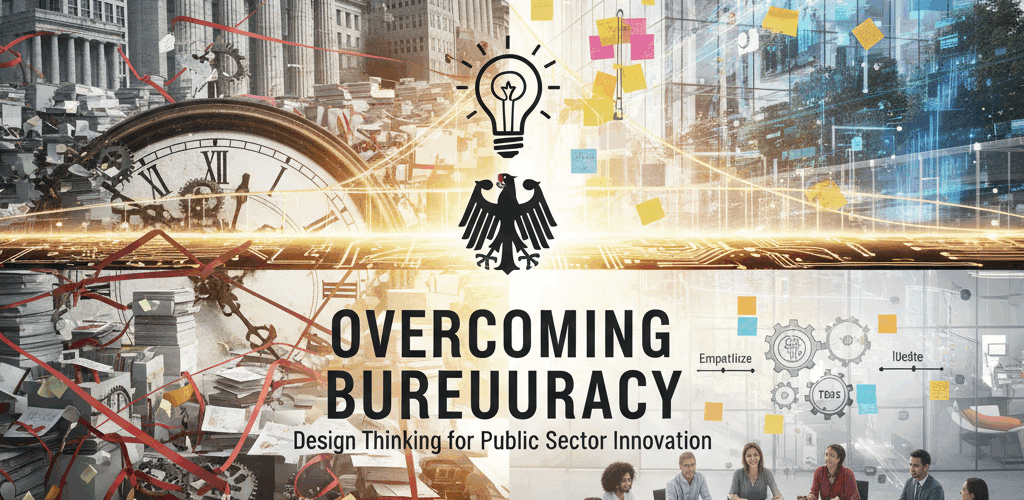EN
DE
NL
Navigating the public sector can often feel like an uphill battle. With its institutional inertia and bureaucratic processes , it’s easy to get frustrated by the slow pace of change. But what if we could apply modern business strategies to government and administration to make them more efficient and effective? The key lies in understanding the challenges and embracing new approaches like…Design Thinking.
The Challenges: Why is Change So Hard?
The notes from a recent discussion highlight several obstacles to progress within German governance. The main culprits are:
- Institutional Inertia & Bureaucracy: Existing structures and processes can be incredibly slow and resistant to change.
- Fear of Transparency: There’s a notable reluctance to embrace transparency, which can hinder accountability and public trust.
- Lack of a Coherent Strategy: A missing, overarching strategy prevents cohesive and meaningful change.
A New Mindset: Lessons from the Netherlands
So, what’s the alternative? We can look to different models for inspiration. The notes suggest drawing from Dutch corporate culture as a model for government. This model emphasizes:
- Equality: Everyone is treated equally, regardless of their position.
- Efficiency: Meetings are for making decisions, not for endless debates. Pauses are also intentionally built in to increase efficiency.
- Outcome-Oriented: The focus is on results, not on status or hierarchy.
- Transparency: Openness and a clear focus on outcomes and results are valued.
Putting It Into Practice with Design Thinking
A powerful tool for driving this transformation is
Design Thinking. This methodology can be applied to government and administration to explore the current situation and develop innovative solutions.
Here’s how this process can work:
- Empathize: Start by understanding the current situation and the needs of those involved.
- Define: Create an overview and set a clear focus for the project.
- Ideate: Brainstorm and develop potential solutions to the problem.
- Test & Iterate: Instead of trying to do everything at once, implement solutions incrementally and gather feedback to improve them.
By using this iterative process, we can move away from rigid, top-down approaches and toward flexible, citizen-centered solutions.
Thinking Differently: A Path Forward
The path to a more efficient and responsive public sector requires a shift in mindset. We need to adapt best practices from other successful models and apply them to our own systems. For instance, we could think of special funds as an
OKR (Objectives and Key Results) system. This could include objectives like:
- Becoming a decisive and future-proof country.
- Positioning our education and skills to be globally competitive.
- Ensuring transparency in the use and impact of investments.
This approach isn’t about simply copying other systems; it’s about learning from them and applying a new way of thinking to solve our biggest challenges. It’s time to embrace transparency, efficiency, and a focus on outcomes to drive real change.
This post is based on the following video, which shows our culture. Not only in companies, buti general:
And an artcile about the investments of the German Governement (in German langugae. You can let you browser translate the text by your browser):
https://finanzmarktwelt.de/deutschland-ohne-plan-wie-das-sondervermoegen-ins-leere-laeuft-364636/
